Every Derived Table Must Have Its Own Alias
In the realm of database management systems, derived tables play a crucial role in enhancing the efficiency and effectiveness of data retrieval and analysis. Derived tables, also known as subqueries or inline views, are temporary tables that are derived from the result of a SQL query. They are extremely useful for complex analytical queries that involve aggregations, filtering, and joining of multiple tables.
Definition of Derived Tables:
A derived table is a table that is created on-the-fly as a result of a subquery within a larger query. It can be thought of as a virtual table that exists only for the duration of the query execution. Derived tables contain columns and rows just like any other table, but they are not stored in the database permanently. Instead, they are created and destroyed as needed during query execution.
Purpose of Assigning Aliases to Derived Tables:
In SQL, an alias is a temporary name given to a table or column. When it comes to derived tables, assigning aliases becomes crucial for two main reasons. Firstly, it allows you to refer to the derived table in the main query by using a concise and meaningful name. Secondly, it enables you to use the derived table multiple times within the same query.
Importance of Unique Aliases for Derived Tables:
Assigning a unique alias to each derived table is of utmost importance. This ensures that there is no ambiguity when referring to the derived table in the subsequent parts of the query. In complex queries involving multiple join operations and numerous derived tables, using unique aliases helps differentiate between them and prevents confusion for the database management system.
Benefits of Using Aliases for Derived Tables:
Using aliases for derived tables provides several benefits. Firstly, it improves the readability and understandability of the query by giving meaningful names to derived tables. Instead of using long and complex subquery expressions, aliases make the query more concise and easier to comprehend. Secondly, it enables the reusability of derived tables. By assigning aliases, you can refer to the derived tables multiple times within the same query, avoiding unnecessary duplications and improving query performance.
Best Practices for Naming Aliases for Derived Tables:
When naming aliases for derived tables, it is important to follow certain best practices. Firstly, use descriptive and meaningful names that accurately reflect the purpose of the derived table. This helps in understanding the query logic and makes the code more maintainable in the long run. Secondly, choose aliases that are unique and do not conflict with any existing table names or column names in the query. This ensures that the query executes without any errors or ambiguities.
Consequences of Not Assigning Aliases to Derived Tables:
Not assigning aliases to derived tables can have severe consequences in the query execution process. Firstly, it can lead to confusion and errors when referring to the derived table in subsequent parts of the query. This can result in incorrect results or even query failures. Secondly, not using aliases can make the query code verbose and difficult to comprehend, especially in complex queries involving multiple derived tables. This can hinder the understanding and maintenance of the query code in the future.
FAQs:
Q: What is the purpose of using derived tables in SQL queries?
A: Derived tables are used to perform complex data analysis and manipulation tasks by creating temporary tables based on the result of subqueries. They enable combining data from multiple tables, perform aggregations, filtering, and other advanced operations.
Q: Can I use a derived table without assigning an alias?
A: While it is possible to use a derived table without assigning an alias, it is not recommended. Assigning aliases to derived tables improves query readability, reusability, and helps avoid confusion or errors in subsequent parts of the query.
Q: How should I name the aliases for derived tables?
A: It is best practice to use descriptive and meaningful names for derived table aliases. The names should accurately represent the purpose of the derived table and should be unique to avoid conflicts with existing table or column names in the query.
Q: What are the consequences of not assigning aliases to derived tables?
A: Not assigning aliases to derived tables can result in confusion, errors, and difficulties in subsequent parts of the query. It can hinder readability, understandability, and maintainability of the query code, especially in complex queries involving multiple derived tables.
In conclusion, every derived table must have its own alias. Assigning unique aliases to derived tables is crucial for query clarity, reusability, and avoiding potential errors. By following best practices for naming aliases, you can enhance the efficiency and effectiveness of your SQL queries, ensuring accurate and meaningful results.
#1248 – Every Derived Table Must Have Its Own Alias
Keywords searched by users: every derived table must have its own alias Every derived table must have its own alias, Derived table, Every derived table must have its own alias union, Alias derived table mysql, Derived MySQL, Mysql JOIN as alias, INNER JOIN as alias, Subquery in FROM must have an alias
Categories: Top 11 Every Derived Table Must Have Its Own Alias
See more here: nhanvietluanvan.com
Every Derived Table Must Have Its Own Alias
In the realm of database management, derived tables play a crucial role in facilitating complex queries and achieving efficient data retrieval. Derived tables are essentially temporary tables that are derived from the result of a subquery. While they may seem straightforward at first glance, it is important to remember that every derived table must have its own alias. In this article, we will delve into the reasons behind this requirement, explore the benefits of aliases, and address some frequently asked questions to provide a comprehensive understanding of this topic.
Why do derived tables need aliases?
When dealing with complex SQL queries that involve derived tables, it becomes essential to reference the derived table in subsequent parts of the query. By assigning an alias to the derived table, we create a shorthand reference that makes the query more concise, readable, and maintainable. Furthermore, it allows us to differentiate between multiple instances of the same derived table that may exist within a query.
Aliases serve a crucial role in disambiguating column names. Since derived tables typically originate from subqueries that involve joins or other transformations, their resulting columns may have the same name as those in the main query or other derived tables. By assigning an alias, we can refer to specific columns unambiguously in subsequent parts of the query. This prevents any confusion or conflicts that may arise when referencing columns without an alias.
Additionally, aliases enable us to create self-joins or nested subqueries. With aliases, we can use derived tables within the same query multiple times, either joined with other tables or nested within other subqueries. Each instance of the derived table must have a unique alias to ensure clarity and prevent any ambiguity. This level of flexibility offered by aliases significantly enhances the query-writing process, allowing for efficient and structured database management.
Benefits of using aliases
1. Improved readability: By giving derived tables meaningful aliases, it becomes easier to understand the query’s logical flow. Human-readable aliases convey the purpose or role of the derived table, making the query more comprehensible to developers and analysts. This, in turn, simplifies the debugging and maintenance processes.
2. Simplified referencing: Aliases serve as shorthand references, replacing lengthy table names or complex subqueries. This reduces the verbosity of the query, making it efficient and concise. Furthermore, using aliases helps avoid repetitive long table names, making the query more readable and less prone to errors.
3. Enhanced modifiability: Aliases facilitate flexibility in query modifications. If a derived table is renamed or removed, altering the query later becomes a less cumbersome task. By using meaningful aliases, one can easily identify specific instances of the derived table and make necessary changes without affecting other parts of the query.
Frequently Asked Questions (FAQs):
Q1: Are aliases mandatory for all derived tables?
A1: Yes, every derived table must have its own alias. It is considered a best practice to assign aliases to derived tables to ensure query clarity, avoid ambiguity, and enhance maintainability.
Q2: Can I reuse an alias for different derived tables?
A2: No, each derived table within a query must have a unique alias. Reusing aliases for different derived tables may lead to confusion and conflicts, as the aliases are used to reference specific instances of derived tables.
Q3: How should I choose aliases for derived tables?
A3: It is advisable to choose meaningful and descriptive aliases that reflect the purpose or role of the derived table within the query. Avoid using aliases that are too generic or ambiguous to ensure clarity and readability.
Q4: Can I use aliases for derived tables in all database management systems?
A4: Yes, aliases for derived tables are supported by most relational database management systems, including MySQL, SQL Server, Oracle, and PostgreSQL.
Q5: Can I use aliases for derived tables in subqueries?
A5: Yes, aliases can be used for derived tables within subqueries as well. The same aliasing principles apply to derived tables in subqueries, enhancing readability and maintainability.
In conclusion, every derived table must have its own alias in order to improve query readability, disambiguate column names, enable self-joins, and enhance flexibility in complex SQL queries. By following this best practice, database administrators and developers can ensure that their queries are concise, maintainable, and efficient.
Derived Table
In traditional SQL queries, tables are typically joined together using common columns or keys. However, there are situations where a join operation cannot be easily achieved, or the result may be too complex to efficiently handle. Derived tables can address these scenarios by providing a way to break down complex queries into smaller, more manageable pieces.
One of the key benefits of derived tables is their ability to simplify complex queries. By breaking down a query into subqueries, each subquery can be written and tested individually, making it easier to understand and troubleshoot. This modular approach also allows for the reuse of subqueries in multiple places, reducing redundancy and improving maintainability.
Derived tables can also be used to optimize performance. In cases where a join operation would result in a large intermediate result set, using a derived table can help reduce the size of the data being processed. This can lead to faster execution times and improved query performance. Additionally, derived tables can be indexed, just like physical tables, further enhancing query optimization.
Another advantage of derived tables is their ability to perform calculations and transformations on the fly. For example, a derived table can be used to calculate aggregates, such as sums or averages, on a subset of data. This can be helpful when performing ad-hoc analysis or generating reports. Derived tables can also be used to filter data based on specific criteria, allowing for the creation of subsets of data that meet certain conditions.
Frequently Asked Questions (FAQs)
Q: Can I use derived tables in any database system?
A: Derived tables are a feature supported by most relational database management systems, including popular ones like MySQL, Oracle, SQL Server, and PostgreSQL. However, it’s important to consult the documentation of your specific database system to ensure compatibility and understand any limitations or syntax differences.
Q: How do derived tables differ from temporary tables or views?
A: While derived tables, temporary tables, and views can all be used to manipulate data, they differ in how they are created and used. Derived tables are created within a query and exist only for the duration of that query. Temporary tables, on the other hand, are physical tables that are created and stored in the database, typically for temporary use. Views are virtual tables that are defined by a query and can be used like any other table in subsequent queries.
Q: Can I update or delete data in a derived table?
A: No, derived tables are read-only and cannot be modified directly. They are generated on-the-fly during query execution and do not exist as physical entities in the database. If you need to update or delete data, you should perform those operations on the actual underlying tables.
Q: Are there any limitations or considerations when using derived tables?
A: Like any database feature, derived tables have their own limitations and considerations. For example, derived tables can add complexity to queries, and excessive use may impact query performance. Additionally, derived tables cannot be referenced in certain parts of a query, such as the FROM clause of another derived table. It’s important to carefully consider the specific requirements and limitations of your database system when using derived tables.
In conclusion, derived tables are a powerful tool in database management that enables the creation of virtual tables based on the result of a query. They offer a range of benefits, including simplifying complex queries, optimizing performance, and enabling on-the-fly calculations and transformations. However, it’s important to understand the limitations and considerations when using derived tables to ensure their effective and efficient use in your database environment.
Every Derived Table Must Have Its Own Alias Union
When it comes to working with complex SQL queries, one concept that often causes confusion and frustration is the use of derived tables. Derived tables, also known as subqueries or inline views, are temporary result sets created within a query to perform intermediate calculations or filtering. These derived tables can then be used as a regular table in the main query.
One important rule to remember when using derived tables is that each derived table must have its own alias union. This alias union serves as a unique identifier for the derived table and helps avoid naming conflicts within the query. Without proper aliasing, the query may produce incorrect or unexpected results.
To better understand the importance of alias unions in derived tables, let’s explore a few common scenarios and frequently asked questions related to this topic.
FAQs about Alias Unions in Derived Tables:
Q: What is an alias in SQL?
A: An alias in SQL is a temporary name assigned to a table or column within a query. It helps simplify queries, especially when different tables or columns have similar names. Aliases can be used to reference tables or columns throughout the query, making it more readable and easier to work with.
Q: What is a derived table in SQL?
A: A derived table, also known as a subquery or inline view, is a temporary result set created within a query. It is enclosed within parentheses and can be used as a regular table in the main query. Derived tables often perform intermediate calculations or filtering to simplify complex queries.
Q: Why is it important to alias derived tables?
A: Alias unions are crucial for derived tables because they provide a unique identifier for each derived table within the query. Without proper aliasing, the database engine may not be able to distinguish between different derived tables, leading to ambiguities and incorrect results. Aliasing ensures clarity and prevents naming conflicts.
Q: How do you alias a derived table in SQL?
A: To alias a derived table, you need to provide a unique name after the closing parenthesis of the derived table. The alias name is preceded by the AS keyword. For example, if we have a derived table that calculates the total sales, we can alias it as “TotalSales” using the syntax: SELECT * FROM (query) AS TotalSales.
Q: Can I use the same alias for multiple derived tables in a query?
A: No, each derived table must have a unique alias union within the query. Using the same alias for multiple derived tables can lead to naming conflicts and ambiguity. It’s best practice to choose meaningful and descriptive alias names to avoid confusion.
Q: What happens if I don’t alias a derived table?
A: If you don’t alias a derived table, the database engine may throw an error or produce unexpected results. Without a unique identifier, the engine won’t be able to distinguish between different derived tables or refer to them properly. Proper aliasing is necessary for accurate and efficient query execution.
Q: Can I reuse the alias of a derived table in another part of the query?
A: No, the scope of an alias is limited to the query where it is defined. You cannot reference the same alias outside its derived table. If you need to reference the same derived table in multiple parts of the query, you can use a common table expression (CTE) instead.
Q: Are alias unions necessary for all derived tables?
A: Yes, all derived tables within a query must have their own alias union. This applies even if the derived tables have the same structure or logic. Each alias union provides a unique identifier, ensuring clarity and preventing naming conflicts.
Images related to the topic every derived table must have its own alias
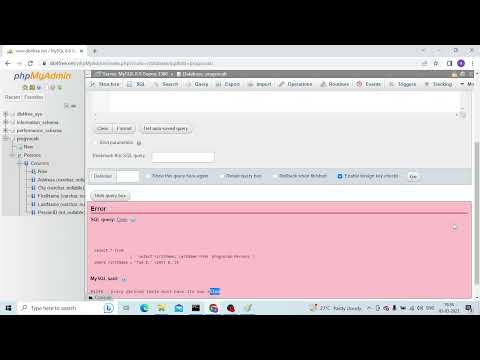
Found 11 images related to every derived table must have its own alias theme

![Every derived table must have its own alias[Solved] - thisPointer Every Derived Table Must Have Its Own Alias[Solved] - Thispointer](https://thispointer.com/wp-content/uploads/2021/01/Screenshot-2021-01-20-at-5.36.58-PM.jpg)



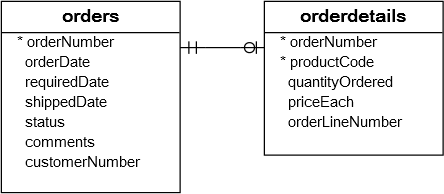

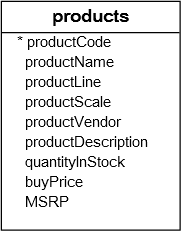
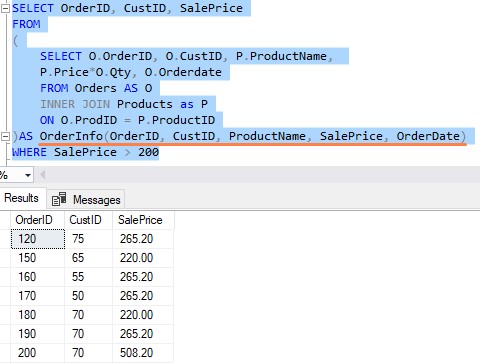



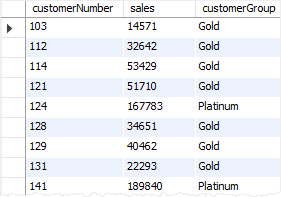



Article link: every derived table must have its own alias.
Learn more about the topic every derived table must have its own alias.
- Every derived table must have its own alias.
- How to Fix The “Every derived table must have its own …
- Every derived table must have its own alias[Solved]
- An Essential Guide to MySQL Derived Table
- Every derived table must have its own alias
- [MySQL]出現錯誤1248 — Every derived table must have its …
- Error: Every derived table must have its own alias
- How to fix “Every derived table must have its own alias?”
See more: https://nhanvietluanvan.com/luat-hoc/